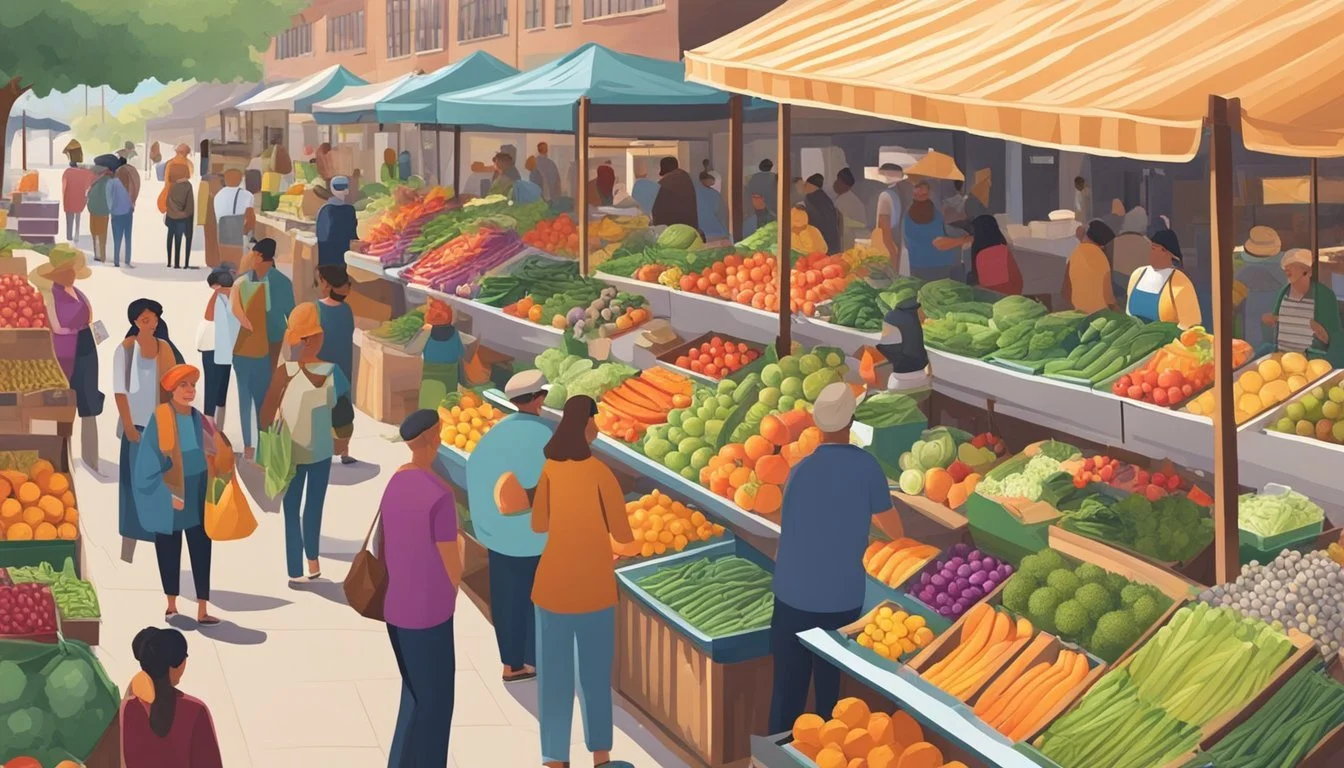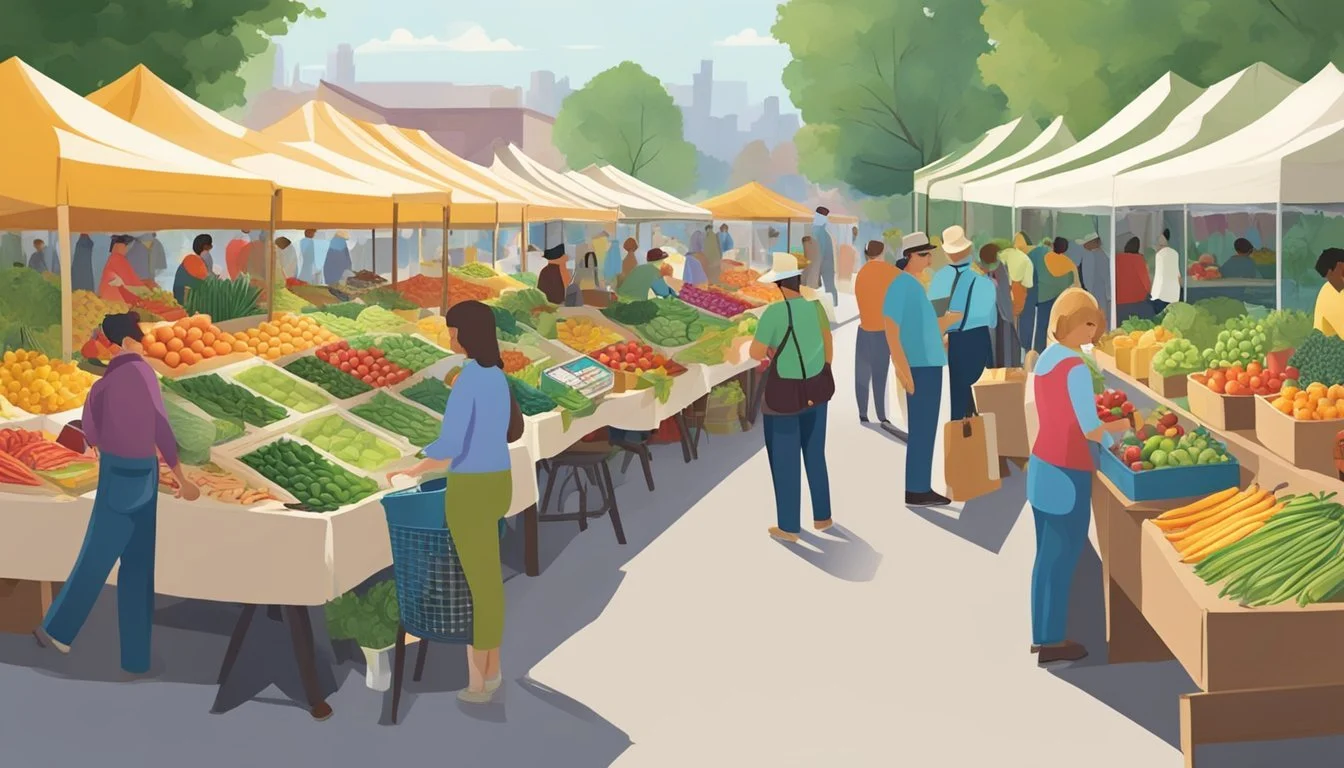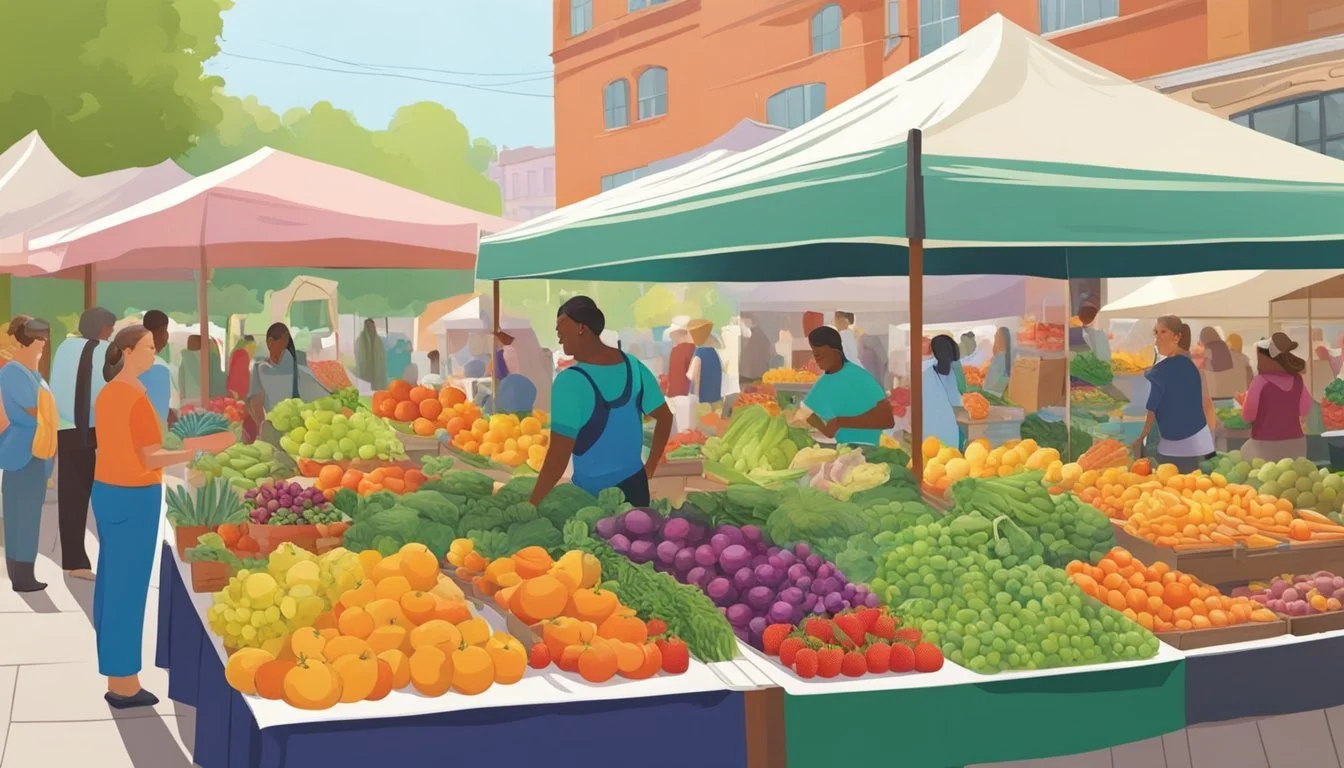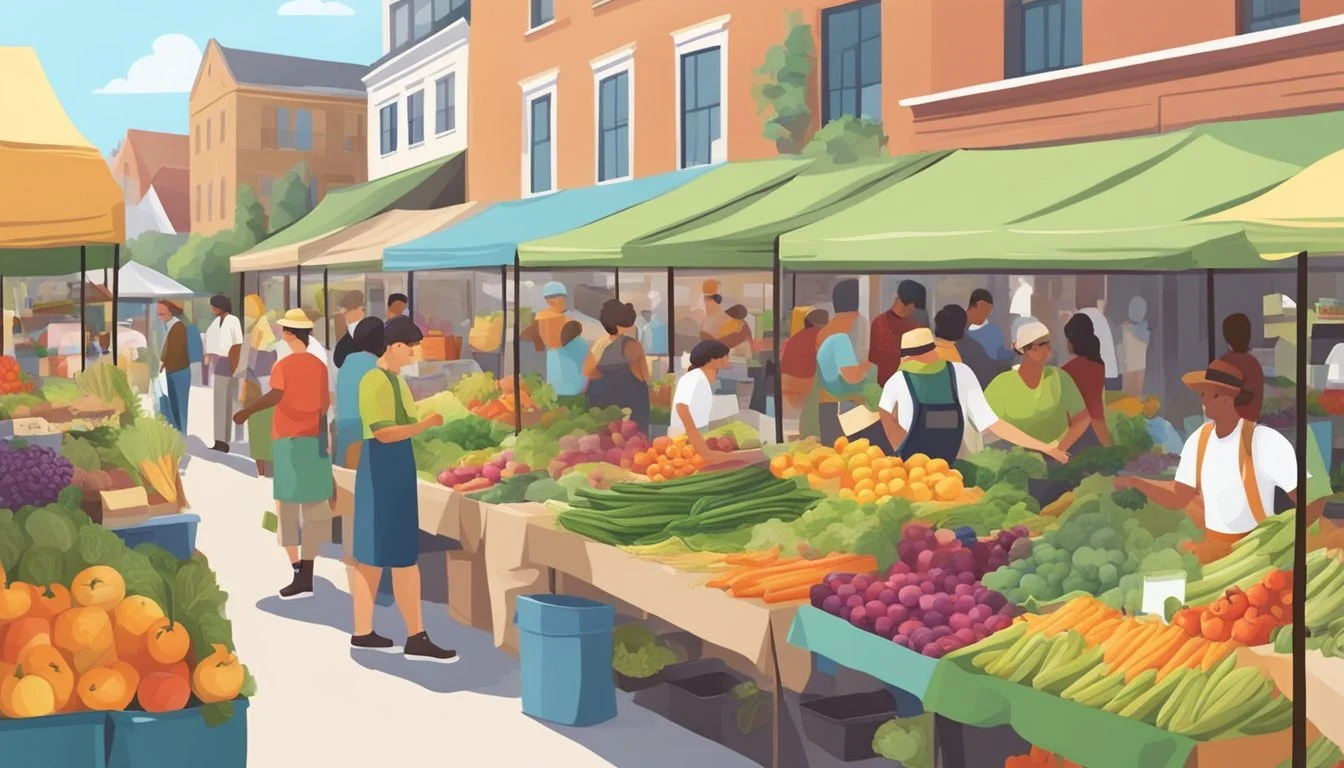Budget-Friendly Tips for Shopping at the Farmers' Market
Maximize Savings Without Compromising on Quality
Shopping at farmers' markets offers a unique opportunity to access fresh, locally-sourced produce and goods. However, navigating these vibrant markets without spending more than planned can be challenging. Budget-conscious shoppers can employ strategic approaches to enjoy the cornucopia of local food while adhering to their financial limits.
Farmers' markets are renowned for their selection of fresh items that often surpass what is available in conventional grocery stores. Despite the perception that these markets are more expensive, there are several strategies customers can use to make their shopping experience economical. Planning, knowledge of seasonal produce, and communication with vendors can lead to a satisfying and budget-friendly market visit.
Understanding Farmers' Markets
Farmers' markets are an integral part of the local food economy and offer consumers access to fresh and seasonal produce directly from the growers.
The Benefits of Shopping Local
Shopping at a farmers' market supports local farmers and contributes to the local economy. It enables consumers to engage with the people who grow their food, offering insights into the production methods and origin of their purchases. The proximity of local farmers reduces the carbon footprint associated with transportation of goods from producer to consumer, making it an environmentally friendly choice.
Seasonality and Its Impact on Produce
Seasonality plays a crucial role in the variety of seasonal produce available at farmers' markets. In-season produce is often fresher, tastier, and more nutritious than out-of-season fruits and vegetables that may have been transported long distances. Consumers can benefit from an ever-changing selection throughout the year, which encourages a diverse and balanced diet. Understanding the growing seasons can help customers plan their purchases and possibly secure better prices on abundant crops.
Strategies for Budget Shopping
Maximizing the efficiency of one's grocery budget at the farmers' market is a matter of strategic planning and savvy shopping. By employing a few targeted strategies, shoppers can enjoy the fresh, local produce while keeping spending in check.
Planning Your Visit
Creating a meal plan for the week ahead is a fundamental step in budget shopping. It helps avoid impulsive purchases and ensures that shoppers buy only what they need. Before visiting the market, one should:
Draft a meal plan and shopping list
Research the market's vendors for potential sales or discounts
Consider seasonality to find the best prices on produce at their peak
Knowing When to Shop
Timing a visit can significantly influence savings:
Shopping early may offer the freshest selection, allowing shoppers to pick the best value offers.
A visit later in the day can yield discounts as vendors may reduce prices on remaining stock to avoid taking it back.
Making the Most of Discounts
Bargain hunting can lead to substantial savings. Shoppers should:
Ask vendors about any unadvertised sales or coupons.
Inquire about bulk purchasing options for additional savings.
Be on the lookout for items marked down due to slight imperfections, which are often just as good in quality for immediate consumption or processing at home.
Maximizing Savings on Produce
When individuals shop at farmers' markets, key strategies such as purchasing in-season items and bulk buying coupled with preservation techniques can lead to significant savings on fresh produce without compromising on quality.
Buying In Season
Seasonality is crucial for savings on produce. Customers are advised to purchase fruits and vegetables that are in season locally as they tend to be more abundant and thus priced competitively. Moreover, seasonal produce often has the added benefit of superior flavor and nutritional content due to peak ripeness.
Spring may offer strawberries and asparagus (What wine goes well with asparagus?).
Summer brings tomatoes, corn, and peaches.
Fall introduces pumpkins and apples.
Winter is time for citrus fruits and root vegetables.
One can consult a seasonal produce guide to know what is currently in season for the best deals.
Bulk Purchases and Food Preservation
Purchasing produce in bulk can lead to savings, especially when deals are found for larger quantities. However, one must have a plan for preserving these fruits and vegetables to prevent food waste. Effective methods include:
Freezing: Ideal for berries, green beans, corn, and more. Blanching vegetables before freezing preserves texture and flavor.
Canning: Suitable for tomatoes, cucumbers, and fruits. It can extend the shelf life for years.
Dehydrating: A method especially good for making snacks like dried fruit or veggie chips.
When considering bulk purchases, individuals should be mindful of the storage space available and their capacity to process and preserve the items efficiently.
Engaging with Local Farmers
When shopping at the farmers' market, the opportunity to interact directly with local farmers can lead to more informed purchases and a richer market experience. These interactions allow customers to learn about the source of their food and the work that goes into producing it.
Building Relationships
Why it's Important: Building a relationship with local farmers can lead to a number of benefits. Shoppers who regularly engage with farmers often find themselves privy to tips about the best products or deals.
Conversation Tips:
Be curious: Ask farmers about their favorite products and if they have any recommendations.
Be regular: Try to shop with the same producers regularly to foster familiarity.
Share feedback: Let farmers know how you enjoyed their products on your next visit.
Understanding Farming Practices
Gaining Insight: When customers take the time to understand the farming practices behind the produce they buy, they are able to make more informed choices. This knowledge can also deepen the appreciation for the products.
Questions to Ask:
Methods: "What sustainable practices do you use on your farm?"
Pesticides: "Do you use any pesticides or herbicides, and if so, which ones?"
Benefits of Knowledge:
Shoppers can make healthier choices by understanding the use of chemicals in farming.
Learning about obstacles that farmers face can foster a greater appreciation of their work.
Effective Shopping Habits
In navigating the farmers' market with a budget in mind, shoppers can benefit greatly from adopting effective strategies that strengthen their purchasing power and reduce unnecessary expenses.
The Art of Haggling
At farmers' markets, shoppers often have the unique opportunity to haggle. To engage in haggling effectively, one should arrive early or towards the end of the day, when vendors may be more inclined to negotiate in order to move their goods. A considerate approach is key; one should always maintain respect for the farmer's effort and cost of production. It's practical to express genuine interest in the products and ask if there's flexibility in pricing, especially when purchasing in larger quantities.
Avoiding Impulse Buys
To prevent impulse buys, shoppers should plan their meals in advance and adhere to a specific grocery list. They can:
Start by inspecting all booths before making a purchase, comparing quality and prices.
Set a budget for the shopping trip.
Limit the amount of cash on hand to the predetermined budget to avoid overspending.
By doing so, they can make well-informed decisions about where their money will go and ensure that each purchase plays a role in their meal plans for the week.
Practical Tips for Market Day
When preparing for a trip to the farmers' market, shoppers should focus on two main areas: what to pack and how to move through the market effectively. By arriving equipped and with a game plan, they can save time and money.
What to Bring
Cash: Vendors typically prefer or only accept cash. Shoppers should carry a mix of small bills, as it facilitates faster transactions and makes it easier for vendors to give change.
Reusable Bags: Shoppers should bring their own reusable bags. These are not only eco-friendly but also sturdy and perfect for carrying fresh produce.
Navigating the Market Efficiently
Inventory: Before heading out, shoppers should take stock of their pantry to avoid purchasing what they already have.
Perimeter Strategy: Begin shopping around the perimeter of the market, as this is often where the freshest items are located. Then, work inward, where prepared foods and artisan goods can be found.
Incorporating Farmers' Market Finds into Your Meal Planning
Incorporating fresh, local produce from farmers' markets into meal plans can offer a robust palette of flavors while ensuring nutritional balance. One can find inspiration for meals that are both cost-effective and delicious.
Creative Meal Ideas
Farmers' markets are ideal for discovering fresh and seasonal produce that can inspire a week's worth of meal planning. A shopper might begin by selecting vegetables like asparagus and zucchini, which are versatile and can be used in various dishes. Below is a table with suggestions for incorporating these items into meals:
Day Meal Idea Ingredients Monday Asparagus and Lemon Pasta Fresh asparagus, whole grain pasta, lemon, olive oil, herbs Tuesday Zucchini Fritters with Yogurt Dip Grated zucchini, whole grain bread crumbs, eggs, yogurt Wednesday Grilled Vegetables and Quinoa Salad Seasonal vegetables, quinoa, lemon vinaigrette Thursday Farmers' Market Stir-Fry Various market vegetables, tofu or chicken, soy sauce Friday Stuffed Bell Peppers (What wine goes well with stuffed bell peppers?) with Ground Turkey Bell peppers, ground turkey, tomatoes, cheese
These ideas encourage the use of whole grains and dairy, thereby creating balanced meals without compromising on taste.
Balancing Nutrition and Taste
When meal planning, one might focus on the nutritional benefits of farmers' market offerings, pairing them effectively with pantry staples. For example, a meal that includes steamed asparagus offers high dietary fiber, folate, and vitamins A, C, and K. Serving this with a whole grain option enhances the meal's nutritional value while maintaining a satisfying taste profile. A farmers' market quiche could incorporate nutrient-dense vegetables and protein-rich dairy products like cheese, creating a dish that is as delicious as it is healthy.
In conclusion, visiting the farmers' market with a strategic plan enables one to prepare meals that delight the palate and nourish the body. It's a way to connect with the community's rhythm, savor the peak flavors of seasonal produce, and support sustainable agriculture.
Leveraging Other Shopping Venues and Programs
When shopping for fresh produce and goods, the farmers' market offers unique opportunities to save, but it can be beneficial to weigh these against deals found at grocery stores and through loyalty programs.
Comparison with Grocery Stores
Farmers' Market vs. Grocery Store: A key aspect of budget-friendly shopping is comparing prices and quality of products at the farmers' market with those at grocery stores. Stores like Aldi and Costco are known for their competitive pricing strategies. Consumers might find that while farmers' markets offer fresher produce, certain items may be more cost-effective at grocery chains where economies of scale work to keep prices low.
Produce:
Farmers' Market: Often fresh, locally sourced, could be more expensive for certain items due to small-scale production.
Grocery Store: Consistent quality, potentially less expensive, but may lack the farmers' market's local appeal.
Bulk Purchases:
Farmers' Market: Less common, as items are typically sold in smaller quantities.
Grocery Store (Costco): Ideal for buying in bulk, which can lead to significant savings over time.
Utilizing Rewards and Loyalty Programs
Loyalty programs provide a strategic approach to saving money. Consumers can harness these programs to access discounts and deals that are not typically offered at farmers' markets.
Rewards Programs: Almost all grocery stores—Aldi, Costco, and other local chains—have some form of a rewards or loyalty program. By joining these programs, customers can earn points for discounts on future purchases or receive exclusive offers. Customers participating in programs such as WIC can further benefit from additional savings on necessary items.
Specific Strategies:
Always present your loyalty card or provide your associated phone number during checkout.
Keep track of earned rewards and redeem them in a timely manner to maximize their benefits.
The use of rewards and loyalty programs can complement farmers' market shopping for those looking to stretch their dollars. When strategically used, these programs can lead to noticeable savings and a broader selection of affordably priced goods.
Sustainable Practices and Long-Term Benefits
Shopping at farmers' markets supports sustainable practices that lead to significant long-term benefits for the environment and local economies. By focusing on waste reduction and farm-to-table initiatives, consumers can partake in a more responsible food consumption cycle.
Reducing Food Waste
Farmers' markets inherently reduce food waste through sell-what-is-grown strategies. When consumers purchase from these local markets, they typically buy fresher produce that has a longer shelf life compared to items that have traveled long distances. This freshness translates to less produce being thrown away due to spoilage.
Bulk Purchases: Farmers' markets allow consumers to buy the exact amount they need, which prevents excess purchases and subsequent waste.
Grow Your Own: Markets often sell potted herbs and plants, encouraging consumers to grow their own and use exactly what is necessary for their cooking, further cutting down on waste.
Supporting Farm-to-Table Initiatives
The farm-to-table movement thrives at farmers' markets where local farmers directly sell their harvest to consumers. This model encourages:
Minimal Packaging: Goods sold at these markets often require less packaging than pre-packaged foods found in conventional grocery stores, reducing plastic and paper waste.
Community Relationships: As consumers support local farmers, they fortify local economies and foster relationships that emphasize the value of knowing where one's food comes from.
By opting for market purchases over pre-packaged alternatives, consumers contribute to more sustainable consumption patterns and a healthier planet.
Conclusion: Embracing the Farmers' Market Experience
The farmers' market offers a unique opportunity for shoppers to engage with their community while purchasing fresh and delicious produce. By adopting a few budget-friendly habits, individuals can fully embrace what these local markets have to offer, merging economical shopping with an enjoyable experience.
Visitors find that meal planning around seasonal produce not only saves money but also introduces them to new flavors and cooking methods. They are encouraged to bring their own bags, reducing waste and possibly earning discounts from appreciative vendors.
Interacting directly with farmers, customers gain insights into how their food is grown. This connection fosters a deeper appreciation for the food on their tables and the work that goes into producing it.
Below is a quick checklist for market-goers:
Plan meals around seasonal items
Bring reusable bags to carry purchases
Allocate a budget for spontaneous buys
Engage with farmers for recipe suggestions
Arrive early for the best selection or late for possible discounts
This market experience is not just about the transaction; it's a way of supporting local agriculture, reducing one's carbon footprint, and contributing to a sustainable community. Farmers' markets are not just a trend but a lifestyle choice that prioritizes health, sustainability, and social interaction. Shoppers leave not only with bags full of nourishment but also with the satisfaction of a meaningful and resourceful outing.





